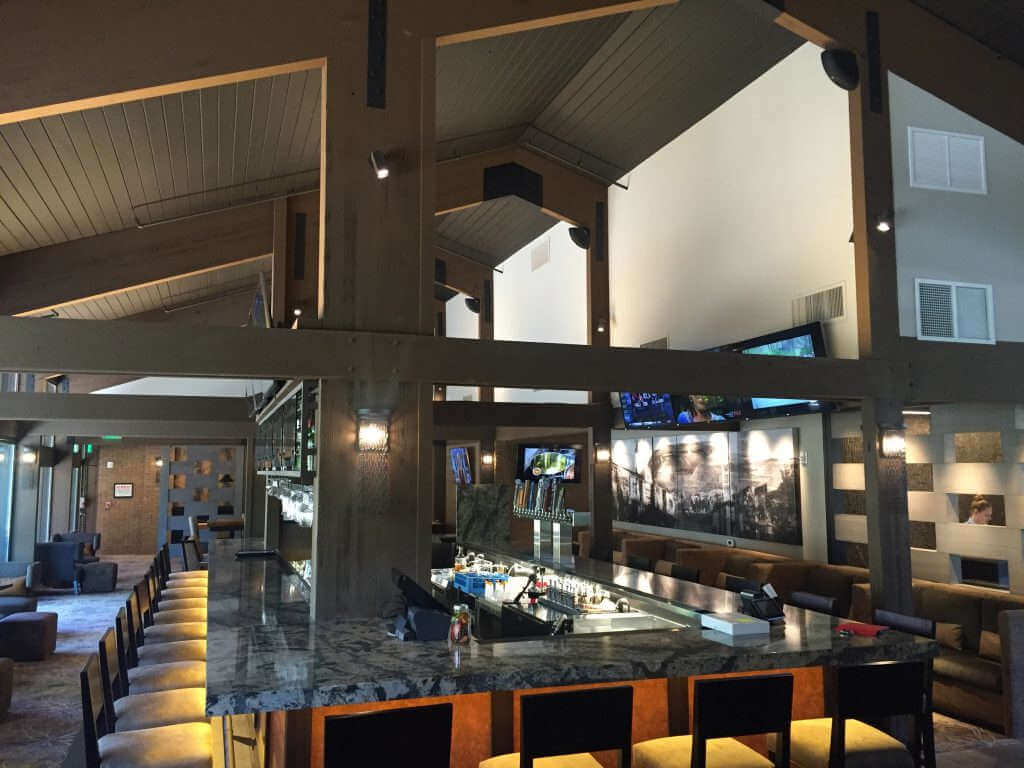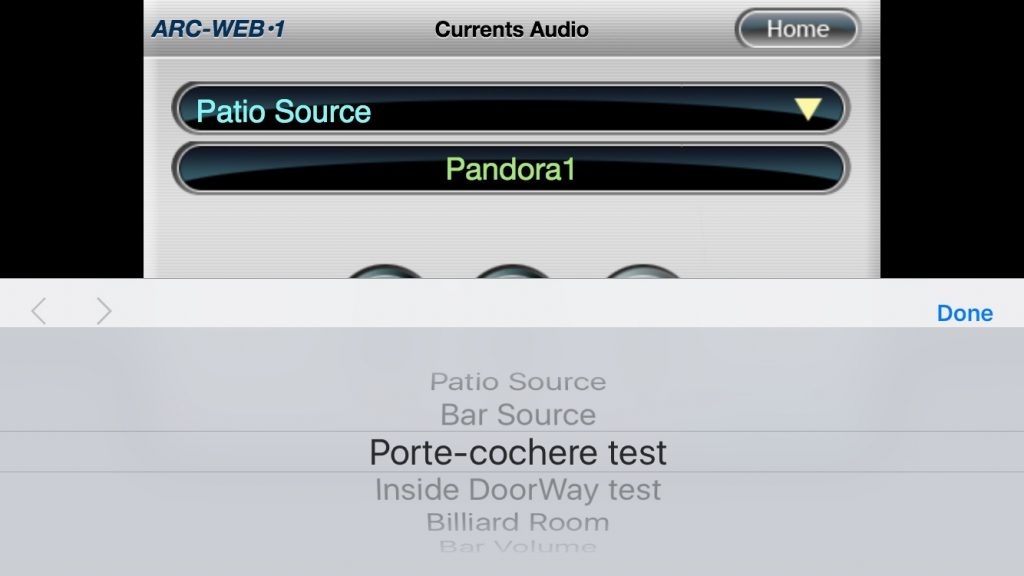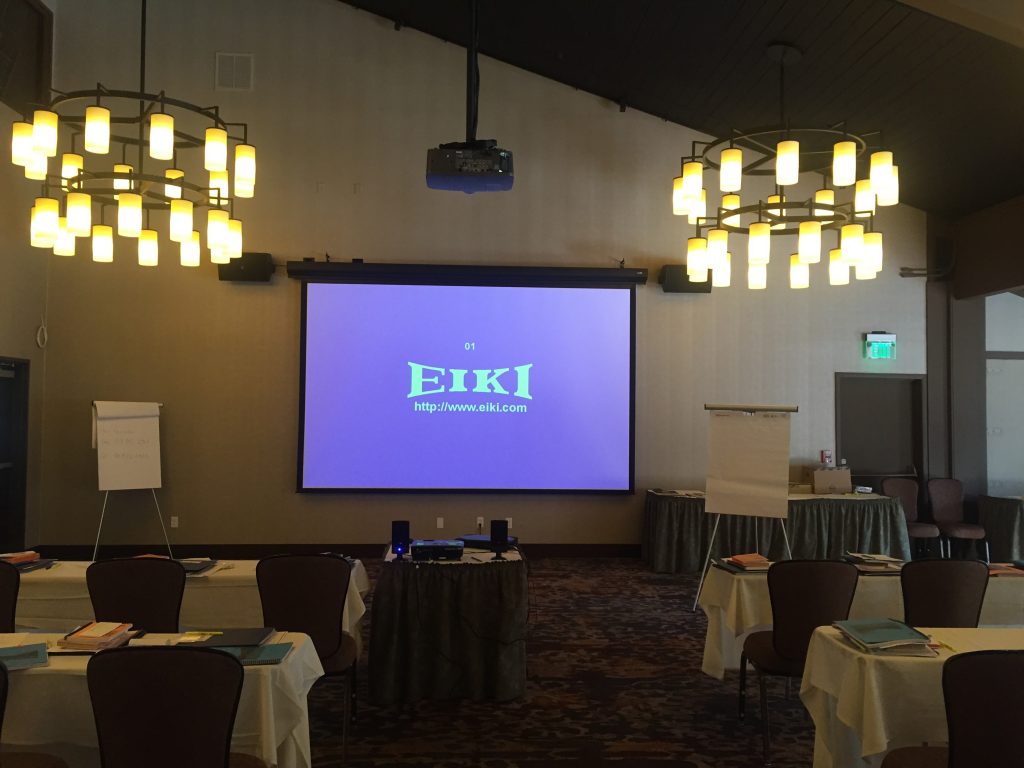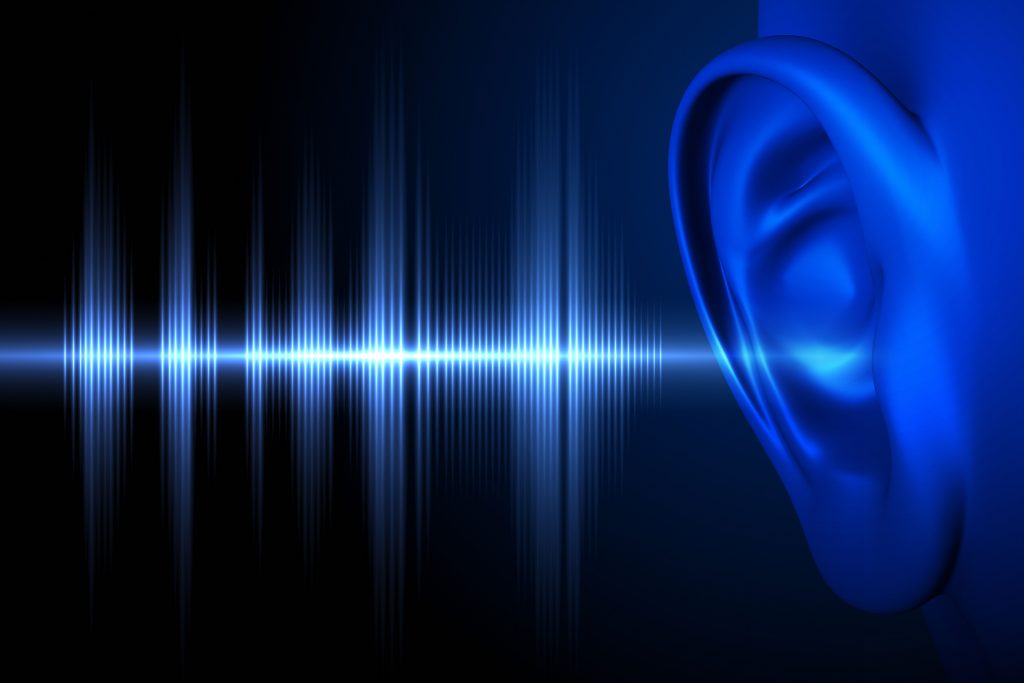Riverhouse Renovation and AV System Featured on SVC Podcast – Part 1
We are so pleased to share that the Audio Visual Bend team has been featured on another national media site – Sound and Video Contractor. The following is the transcription from the SVC Podcast from Sound & Video Contractor Magazine with Tony Sprando of Audio Visual Bend. This is the first part of a two part series.
Click here to download and listen.
The fabulous Riverhouse on the Deschutes hotel in Bend, Oregon got a new owner and a complete renovation down to the concrete. An all-new AV system for meeting areas and the bar and lounge was needed and Audio Visual Bend was called in to design and install it. Tony Sprando is here to tell us all about it. That’s coming up on the SVC Podcast.
Tony, thanks for joining us on the SVC Podcast from Audio Visual Bend in Bend, Oregon. Tell us about Audio Visual Bend.
Well hey, thanks for having me today. Yeah, here in beautiful Bend, Oregon we provide audio visual services for commercial clients. We don’t do any homes so we’re basically designing and building and procuring and installing audio visual equipment for our customers here like schools and churches and businesses. And hospitality is a big group that we’ve been focusing on for the last couple of years.
Okay, so this is a big hospitality installation project. Riverhouse on the Deschutes, a beautiful hotel right there in Bend. The place got a new owner and they re-did everything from the ground up. What was their overall aim with the all new AV systems they wanted to put in?
Well, they wanted to upgrade the facility to be able to tell their guests they have a state-of-the-art graded AV system to kind of refresh the property, to bring some attention to it. So they went out on the hunt to find a group they could connect with and that was local for support reasons obviously, and to be able to have people come in and use the facility for presentations and banquets and any type event and have it seamless and up-to-date.
And since there are people coming in there from just about anywhere, you don’t know who they might be or what equipment they may have, it’s got to be very easy.
Absolutely, yeah. In this day and age, to be able to come in and grab your laptop or your smart phone and just connect immediately.
You’ve got a projection system in there. It was kind of interesting reading about this. How is the video from the projection distributed and where does it all go?
Well, there’s two parts to the Riverhouse. So they have a bar section that’s a sports bar/lounge and then they have the meeting side. So the banquet and meetings side is basically a couple of projection screens and digital signage in the hallways where the bar side is 11-12 flat-screen TV’s that are distributed TV and digital signage to those. So the distribution part of that is pretty straightforward. We use manufacturer – one of them is Atlona and they distribute HDMI over baluns. And that seems to work pretty well for us. There are other companies we use as well, but for this job we chose them and tried to keep one manufacturer as far as the video distribution goes.

Yeah, this looks like a pretty high-energy area with the bar and lounge on one side and you’ve got mostly a little lower profile things like meetings going on in the other side.
That’s correct. Yep.
Okay. And you used one type of Symetrix DSP system in the meeting rooms and a different one on the other side where you’ve got the bar, the restaurant and the lounge.
Yeah, that’s correct. It’s really just a smaller version in the bar side since the audio distribution is much lighter. The banquet side distributed audio systems through the facility for background music is a little bit more complicated and needed more zones. So the meeting side was the Symetrix Radius product and the bar side was the Jupiter 4.
So you’ve got more to handle on the bar side with a more appropriate Symetrix DSP in there. So the web interface and the local control panel, are they pretty much the same or was that a big factor in using the Symetrix system?

Well, yeah. They are pretty much the same. One side is using a panel on the wall, a single wall plate with three buttons and it’s called that ARC-2e panel from Symetrix. Then they can also use an iPad on that side of the building as well to go ahead and control the volume and select sources. The other side has the same feature but it’s much lighter. They do have a touchpad like an iPad over there but they do not have a wall control. The operation on that side is much simpler so we didn’t need both.
So is that why you chose Symetrix or were you just familiar with the products and the setup?
Well, yes on all counts. They’re a really great company to work with and they’re easy to use and the price is right for sure to fit in the jobs this size where budget is important. You know, a facility like this where it’s a daily revenue-generating facility they need to watch their dollars. The same point they can’t lack the sophistication. It needs to be simple and it needs to be smart at the same time. And it is very simple and it’s easy for my company to program those and to take the customer’s needs and put them into the program without complicated software or expensive licensing. So it’s a very good product and we try to install it anywhere we can.
I understand that during the project there were some changes that were needed by the client. What kind of changes did they want to make during the installation process?
You know, a project like this where the new owners came in and literally came down and removed everything inside the building down to the concrete and started over again to really bring a fresh feeling to this location. So as I worked with them on that they wanted to make sure that the look and feel was the number one important thing. I didn’t see a lot of technology and you didn’t see, you know, the line sights. You need to be clear. Everything needs to be open and bright. It was really a dark cave, the older building. So as we were going through this process with them they asked for changes on like hey, can we make sure there’s no visible wall panels and stuff in locations where people can see those things? And the speakers and those kind of things were out of the line sights of your eyes. And so we were willing to work with them on all those and it worked out really well as we did that. We found products and speakers and displays and stuff that weren’t out in the open and they could be pulled up or painted a color that would match the walls or the ceilings so you wouldn’t see them. So that’s the kind of stuff that happens when you work with architects.
 Well, projection is going to be the focal point of the meeting area so what type of projector did you use there?
Well, projection is going to be the focal point of the meeting area so what type of projector did you use there?
For the Riverhouse project we used the Eiki International as the projector manufacturer choice because number one of the LCD technology and the clarity of the picture and high definition. We really like using their commercial-grade projectors. Well, the inorganic LCD panels is the way to go when you need brightness and quality with the lights on. That is how we designed that room since there’s so much light in that room with chandeliers coming down and meetings in that place where you really can’t turn down the lights. It worked really well.
And when they’re doing something in there what sources can they playback from or show video from?
We have a wall plate in each room by Atlona and they have a auto-switcher in that plate. That single-gang wall plate has an HDMI and a VGA and a 3.5 audio jack right on it. And depending on which one you choose it will automatically switch to that and send the picture up to the projector which makes it seamless for the presenters coming in. They don’t need to unplug and plug their stuff into the wall. They can just do it one time and it will all show up on the screen scaled perfectly inside a 16 x 9 image.
Yeah, auto-switching is a fun thing. It really saves a lot of grief and trouble calls.
That’s for sure.
And there’s always some serious consideration on a project like this on how much configuration capability to give the users and how much to make it just completely automatic?
Yep, that is right. Keeping it simple. You know, our competing jobs out there have a much more sophisticated and higher – I wouldn’t say rate of failure because everyone is really using iPads and stuff. But I always say they have a high rate of service because when you need them reprogrammed or you need them changed Symetrix is superior because the other companies out there, you have to have licensed programmers on staff and you have to go to extensive trainings and there’s just a large buy-in. And the Symetrix thing is so my easier for me to come in and make a quick change for a customer as well and I can do it myself. I’m the owner of the company I don’t have to have someone on staff saying wait just to program these panels or service them. They’re very easy to do and it just makes the serviceability second to none in my opinion.
Saves a lot of trouble. Well, I’ve enjoyed hearing about it and how you handled very different environments on the two sides of the hotel. In Part 2 we’ll get into the acoustics and the wireless mic systems. Tony Sprando with Audio Visual Bend in Bend, Oregon and the Riverhouse on the Deschutes hotel AV project.
Thank you.
Thanks to Tony Sprando for getting with us on the podcast. Show notes and equipment links are on the website of Sound & Video Contractor Magazine at svconline.com. Next week Tony will be back to tell us about the wireless mic systems and other details on the Riverhouse on the Deschutes system. That’s on the next SVC Podcast.

